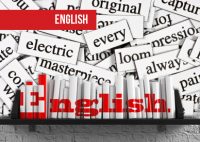Comprehension For SBI PO Set – 50

Comprehension For SBI PO Set – 50
Today, with a Nobel Prize to its credit, Grameen is one of the largest microfinance organizations in the world. It started out lending small sums to poor entrepreneurs in Bangladesh to help them grow from a subsistence living to a livelihood. The great discovery its founders made was that even with few assets, these entrepreneurs repaid on time. Grameen and microfinance have since ecome financial staples of the developing world. Grameen’s approach, unlike other microfinancers, uses the group-lending model. Costs are kept down by having borrowers vet one another, tying together their financial fates and eliminating expensive loan officers entirely. The ultimate promise of Grameen I sto use business lending as a way for people to lift themselves out of poverty.
Recently, Grameen has taken on a different challenge-by setting up operations in the US .money may be tight in the waning recession, but it is still a nation 1,00,000 bank branches. Globally, the working microfinance equation consists of borrowing funds cheaply and keeping loan defaults and overhead expenses sufficiently low. Micro lenders, including Grameen, do this by charging colossal interest rates-as high as 60% or 70%-which is necessary to compensate for the risk and attract bank funding. but loans rates much above the standard 15% would most likely be attacked as usurious in America.
So, the question is whether there is a role for a Third World lender in the world’s largest economy. Grameen America believes that in a few years it will be successful and turn a profit, thanks to 9 million US households untouched by mainstream banks and 21 million using the likes of payday loans and pawn shops for financing. But enticing the unbanked won’t be easy. after all, profit has long eluded US microfinanciers and if it is not lucrative, it is not microlrending, but charity. when Grameen first went to the US, in the late 1980s, it tripped up. Under Grameen’s tutelage, banks started micro loans to entrepreneurs with a shocking 30% loss. But Grameen America says that this time results will be making loans, not training an American bank to do it. More often than not, the borrowers, Grameen finds, in the US already have jobs(as factory workers for example) or side business-selling toys, cleaning houses etc. the loans from Grameen, by and large, provid ea steadier source of funding, but they don’t create businesses out of nothing. But money isn’t everything. More importantly for many entrepreneurs, group members are tremendous sources of support to one another. So even if studies are yet to determine if Grameen is a clear-cut pathway out of poverty it still achieves something useful.
1. What has adversely affected the success of microfinance institutions in the US?
(a) The focus of these institutions is on making a profit at any cost instead of being charitable to the needy
(b) American banks engaged in microlending were the most severly hit during the recession
(c) A widespread perception are better suited to developing countries
(d) Their failure to attract those outside the formal banking system as cutomers
(e) American’s are too proud to accept aid from Third World Countries
2. Why was Grameen made a second attempt to launch itself in the US?
(a) The willingness of US banks to provide the necessary staff and funds to facilitate the spread of microfinance
(b) The rates of interest on loans in the US are exorbitant, making it easier to recover capital.
(c) The realization that a large percentage of the American population not reached by mainstream banks can be tapped
(d) Recognition of the fact that disbursing credit in developing countries during the recession is too risky
(e) None of these
3. Which of the following can be inferred from the passage?
(a) Microfinance has been successful only in Asian countries
(b) Microfinance makes individual borrowers dependent rather than independent
(c) America has the largest number of banks in the world
(d) There is scope for microfinance institutions to be profitable in developed countries
(e) There are no informal sources of credit in developed countries
4. According to the author, what was enhanced the likelihood of success for Grameen America at present?
(a) Its success in Bangladesh and other developing countries
(b) Absence of other microfinance institutions for competition
(c) The fact that America is currently in the midst of a recession
(d) It provides loans at nominal rates of interest ie below 15 per cent
(e) None of these
5. Which of the following can be said about Grameen?
(A) Its success in developing countries will ensure its success in developed countries
(B) It ensures that the poor in developing countries enjoy a subsistence standard of living
(C) It has demonstrated that the poor are far more likely to repay loans than the affluent
(a) None (b) Only (A)
(c) Only (A) and (C) (d) Only (B)
(e) Only (C)
6. What is the central theme of the passage?
(a) The conventional that Grameen is doomed to fail in developed countries
(b) A comprehensive evaluation of the current status of the American economy
(c) A discussion about the prospects of Grameen an dmicrofinance in the US.
(d) The role of banks in facilitating microlending efforts in developed nations
(e) Microfinance efforts are useful in developing countries but are futile in developed ones.
7. Why was Grameen America’s initial US initiative of flop?
(A) Lack of proper training to Grameen America personnel
(B) Grameen’s refusal to adapt their system to meet the needs of the American poor.
(C) It ended up giving loans at half their customary rates of interest
(a) None (b) only (A)
(c) Only (A) and (C) (d) Only (B)
(e) Only (C)
8. Which of the following is a benefit of the Grameen system of microfinance?
(a) If a single member is unable to repay a loan, other group members will repay
(b) Dispensing with the expense of technology networks to monitor advances
(c) It utilizes the vast bank network already existing in a country
(d) Group members can sanction loans and verify if borrowers have sufficient collateral
(e) Backing that borrowers receive from other group members
9. Which of the following is most similar in meaning to the word “ELUDED” as used in the passage?
(a)Avoided
(b) Duped
(c) Abandoned
(d) intangible
(e) Betrayed
10. Which of the following is most opposite in meaning to the word “COLOSSAL” as used in the passage?
(a) short
(b) Lavish
(c) Minority
(d) Frugal
(e) Insignificant
Answer key:
1. (d) 2. (c) 3. (c) 4. (e) 5. (a) 6. (c) 7. (b) 8. (e) 9. (a) 10. (d)


